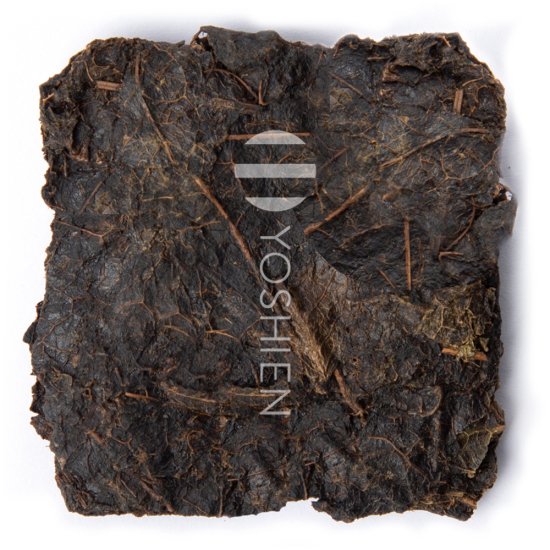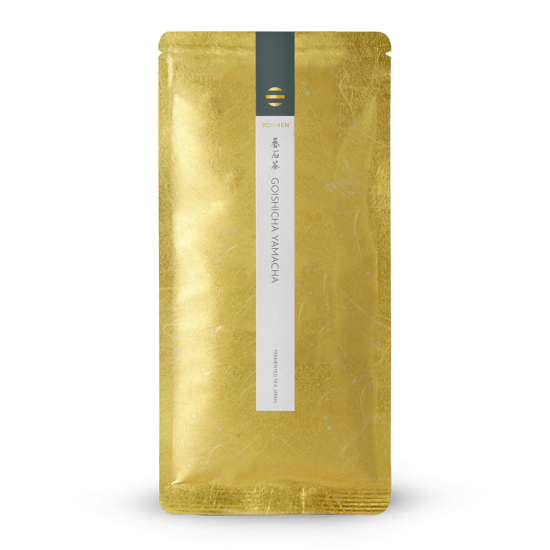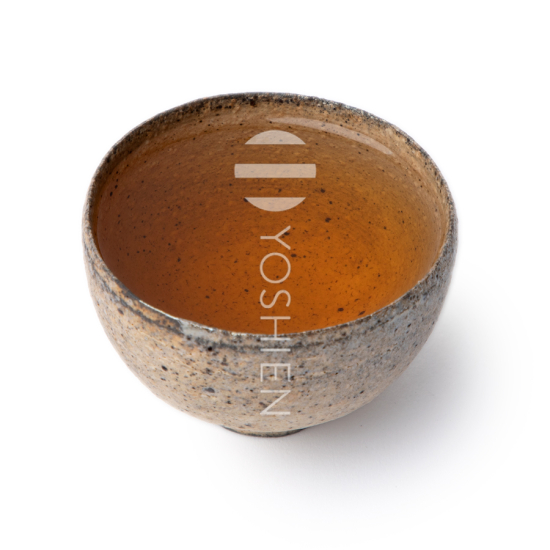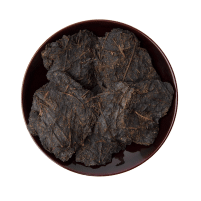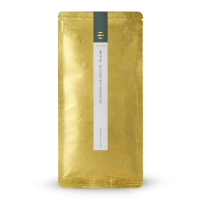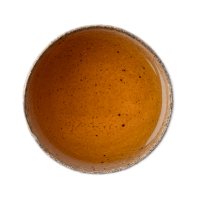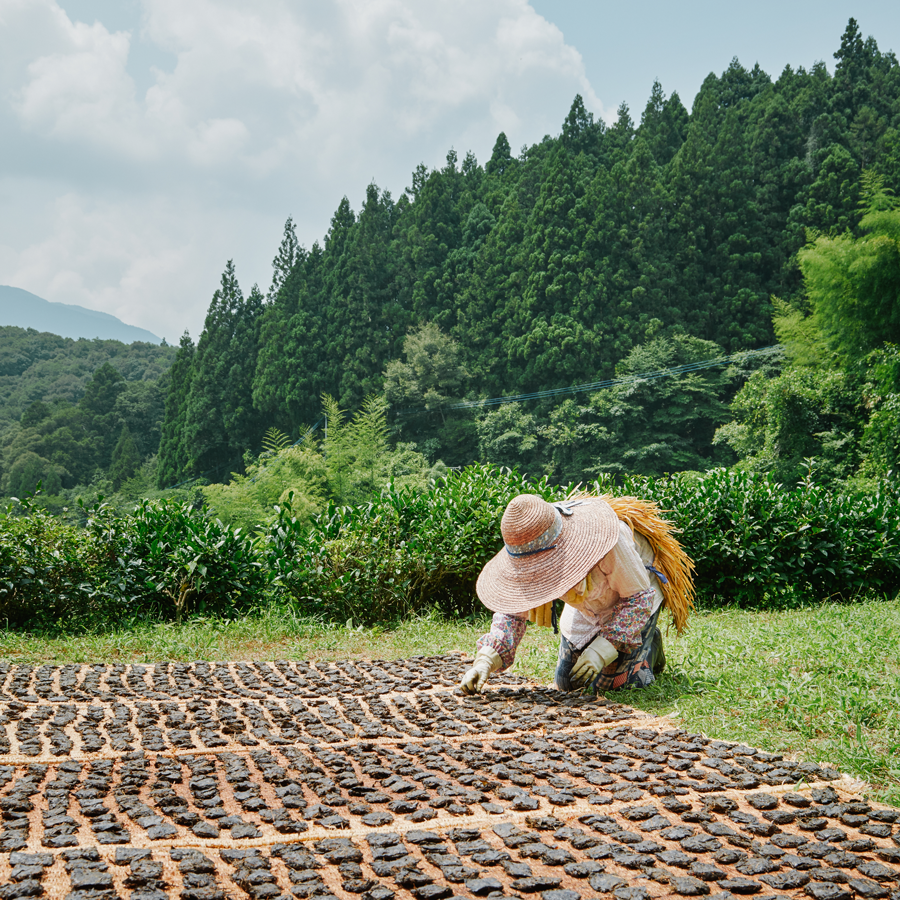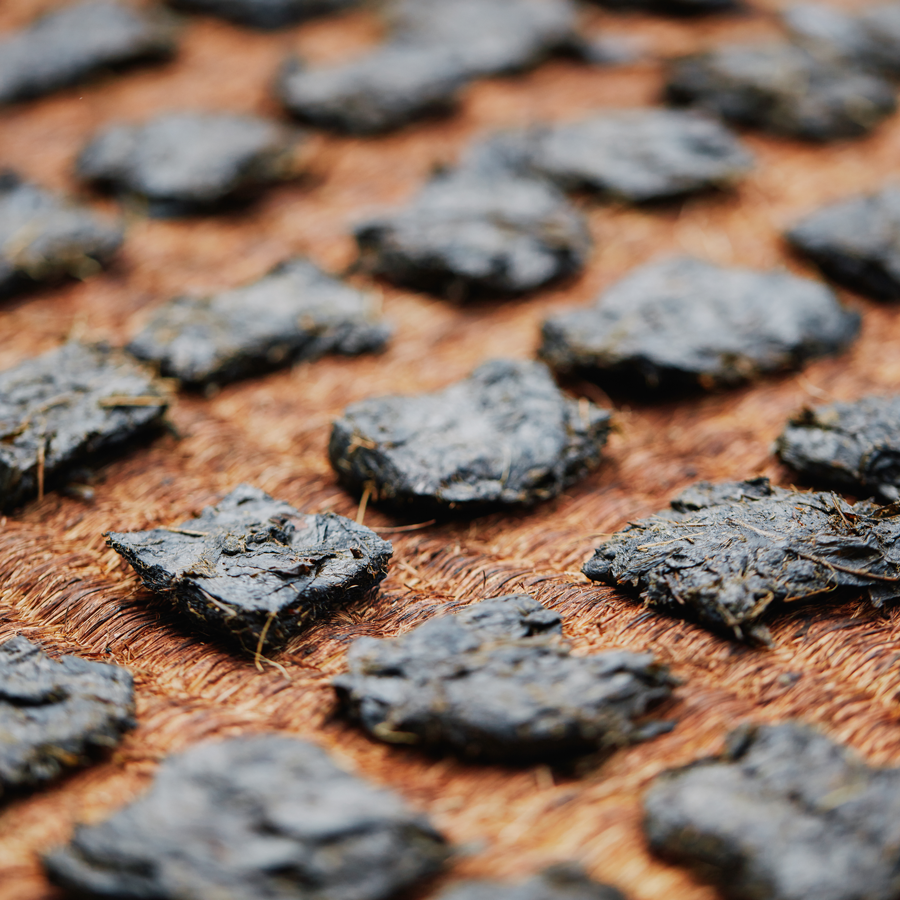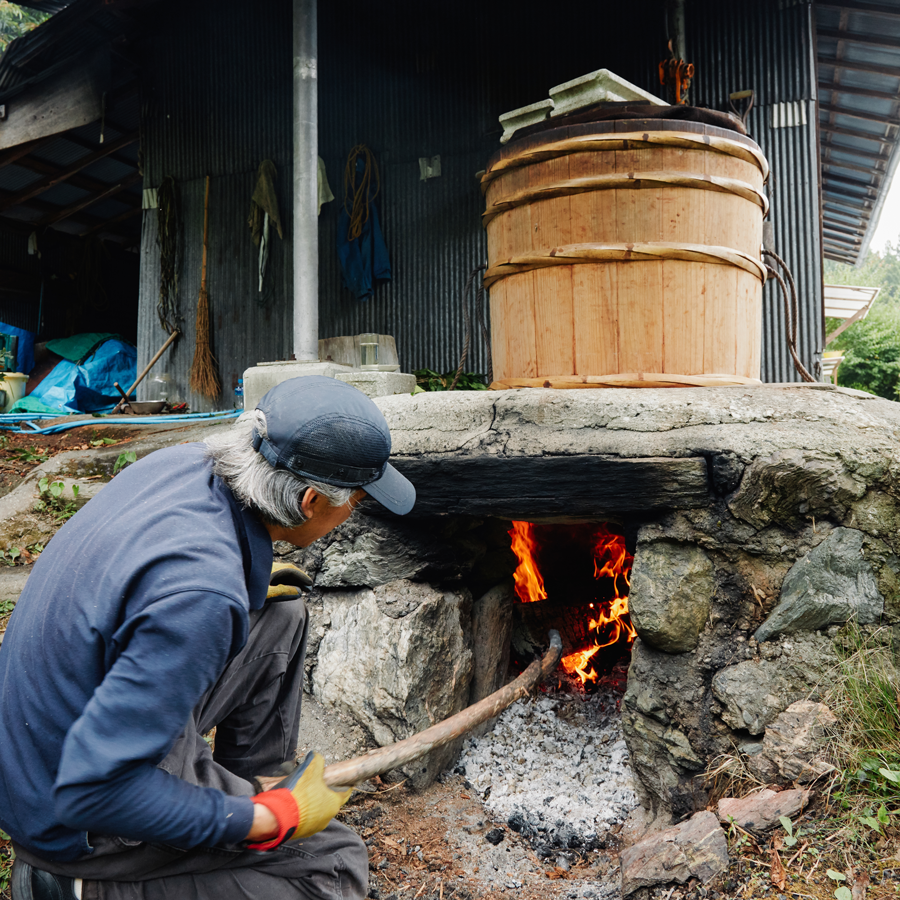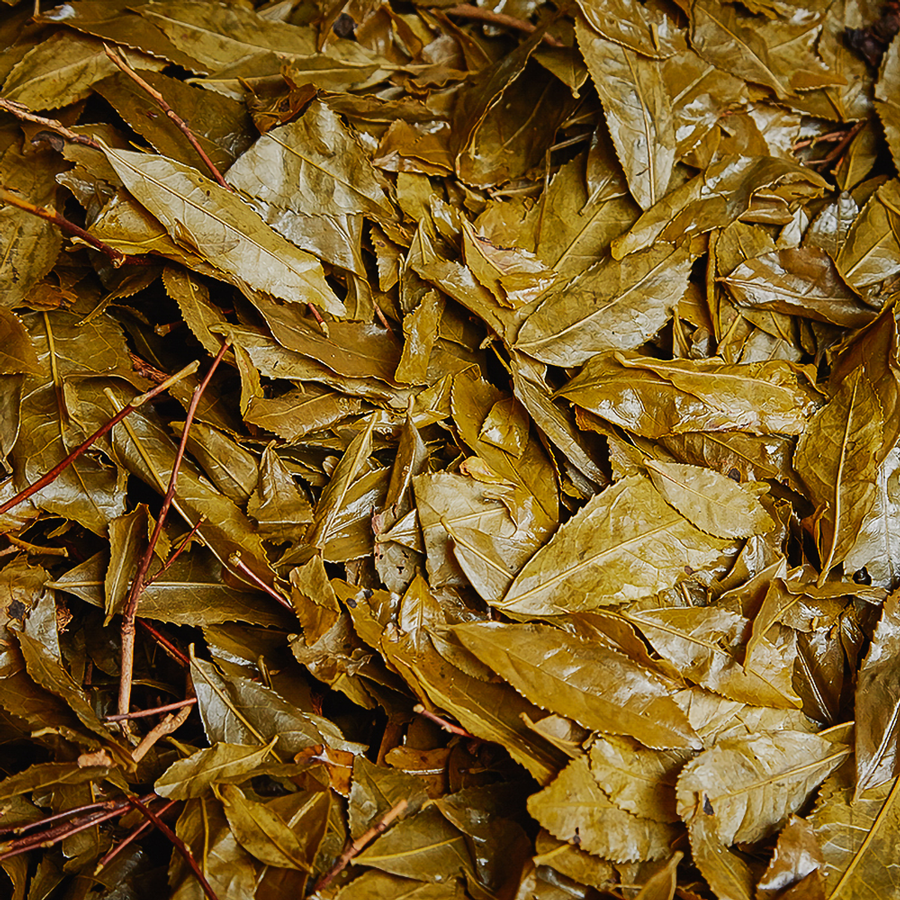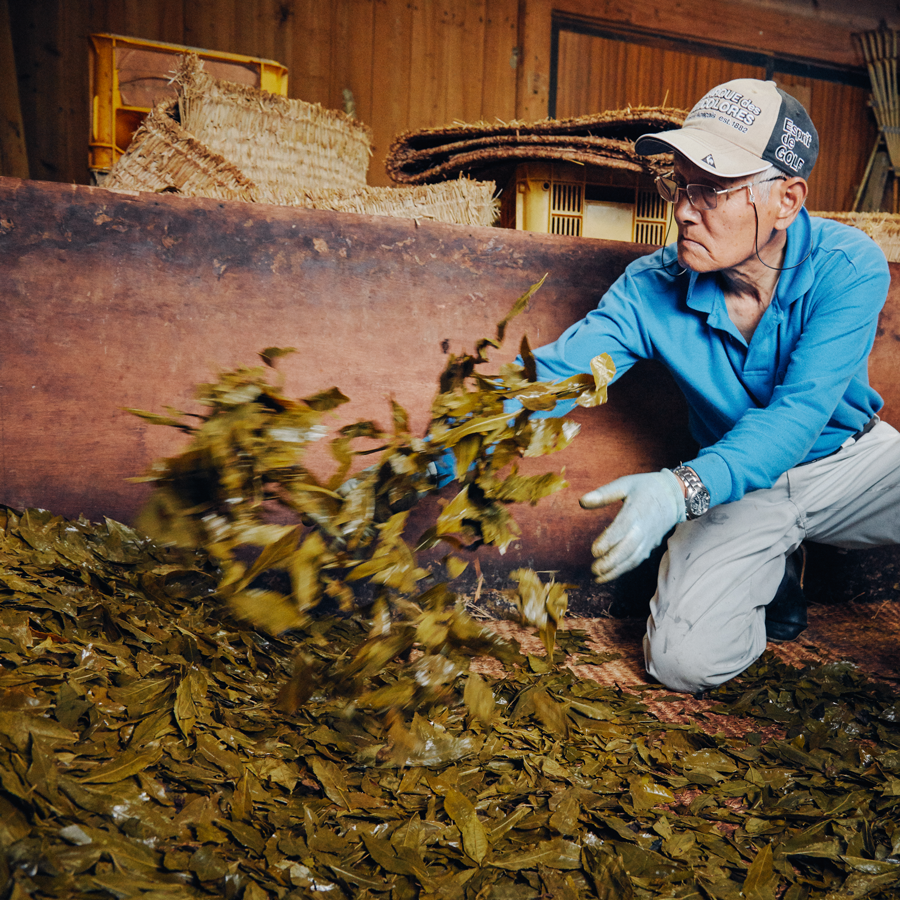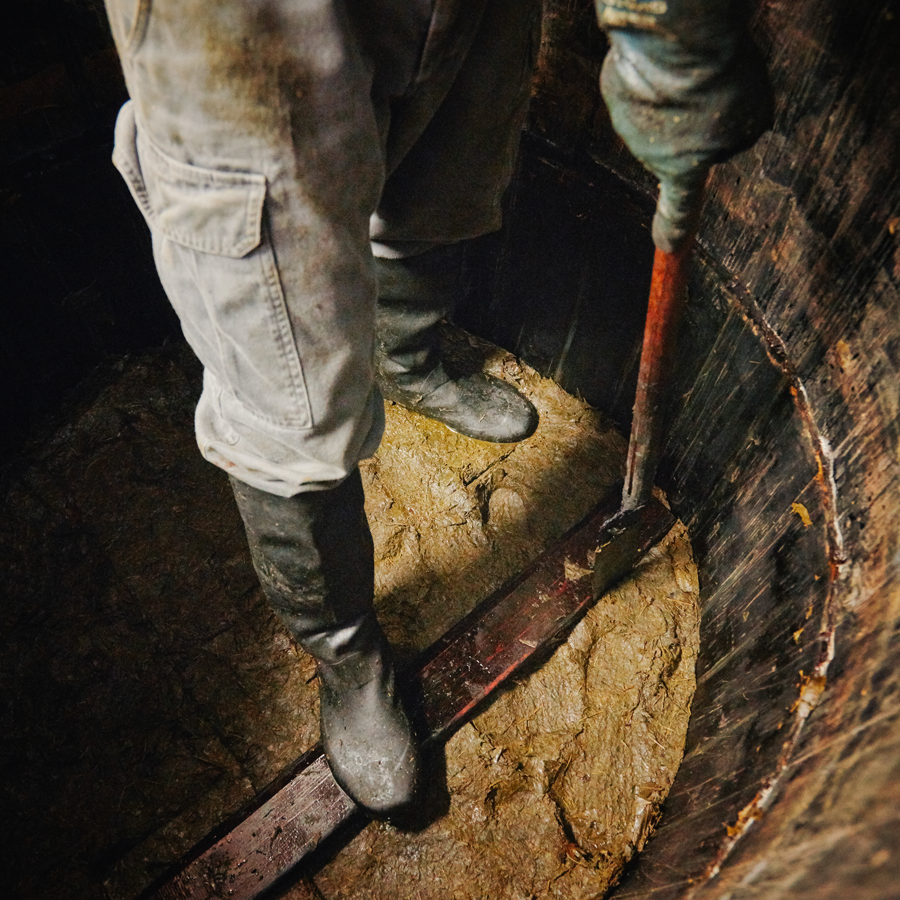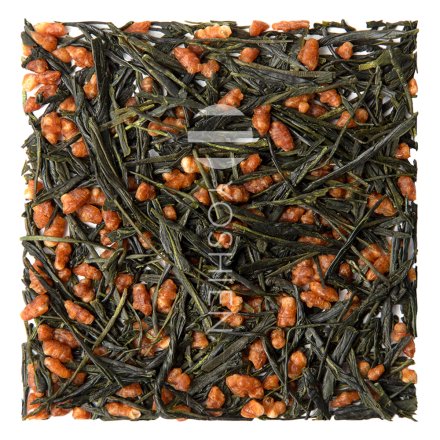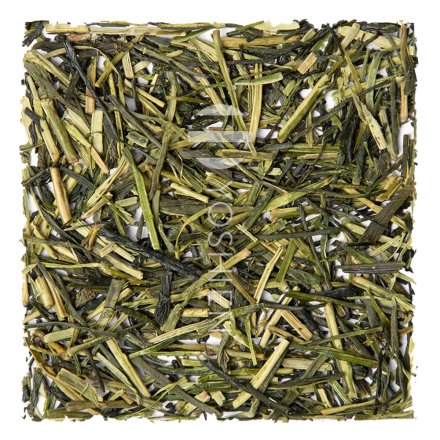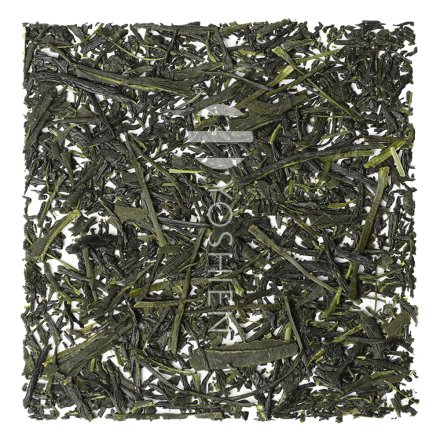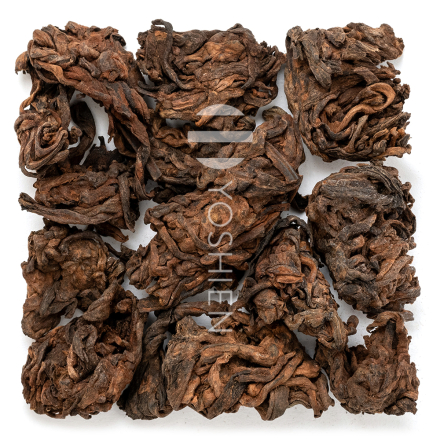Located on the central Pacific Ocean, the coast of the mountainous Kōchi prefecture is exposed to the strong Kuroshio current coming from the equator. Consequently, the climate in Kochi is humid and subtropical, ideal for the fermentation of goishicha. Only the high mountains experience snowfall and the sea temperature rarely drops below 16 degrees throughout the year. Coupled with the fertile alluvial soils, this makes for a perfect environment for the cultivation of fruits, vegetables and an abundant supply of river and sea fish.
The tea is typically harvested in summer with hand sickles and then steamed for two to three hours, after which it is spread on straw mats and separated from its stems. The 50-70cm high mound of tea leaves are covered with another straw mat and fermented aerobically (with oxygen) for five to ten days using fungal cultures. Next, the tea is put into large barrels and fermented anaerobically for 14-20 days, during which this time mainly lactic acid bacteria set the process in motion and the tea ferments in its own "juice". Heavy stones are placed on the lid of the barrel to prevent oxygen from entering. The stones press down on the tea leaves so hard that the oxygen is completely displaced. The compressed mass of tea leaves is finally cut into squares of equal size and dried on straw mats in the sun. Finally, the dried tea is matured for up to another year before being sold.
Origin
This tea is exclusively sourced from the above mentioned tea farm in Ōtoyo.
Sourced directly from the tea farmers.



